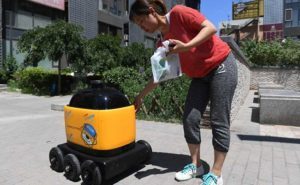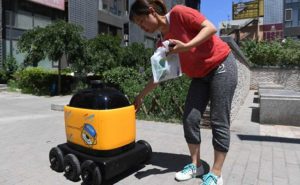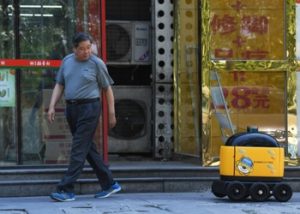
Yellow Robot Becomes The New Delivery Boy In China

BEIJING, CHINA: A little yellow cube like bot can be seen on the residential streets of Beijing now days. This yellow and black cube like thing is a delivery robot which is about the size of a small washing machine. The delivery bots are used in china in order to transport daily needed stuffs like drinks, fruit and snacks from the local store to the residents.
The delivery bot is said to be equipped with a GPS system so that the owners can track their bots. Besides this, these delivery bots comes with cameras and radar as well.
Through these delivery robots the creators can see the future of logistics in China, as one billion packages will eventually be delivered every day through these bots.
These robots are said to be travel at a speed which is not more than three kilometres (two miles) per hour. “The weak point is that it cannot deliver directly to the door like a human,” said the customer, who does not live on the ground floor.
“But it’s still quite practical. The robot delivers relatively quickly,” she said.

The robot seems to do well in the country as China is the world’s biggest online shopping market and Chinese consumers favours cashless payments and smartphone shopping. According to professional services firm Price water house Coopers, more than half of the country’s population purchase a minimum of one smartphone per month, which makes it 14 percent in the rest of the world.
China is such into online shopping that even the toilet paper, avocados or clothes are purchased simply by tapping a button on the smartphone and getting a home delivery.
In order to get a delivery with this yellow delivery robot also known as “little yellow horse”, the customer selects the desired products, taps in the address and pays via their phone.
“At the moment, there are 100 million packages delivered every day in China. It will be one billion in the future,” Liu told AFP.
“There will not be enough humans to make the deliveries. We need more and more robots to fill this gap in manpower. And to reduce costs,” added the CEO.